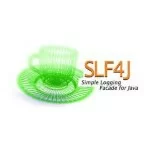SpringMVC4 + Spring Data JPA + SpringSecurity configuration using JavaConfig
In this article we will see how to configure and integrate SpringMVC4, Spring Data JPA with Hibernate and SpringSecurity using JavaConfig.
1. First let’s configure all the necessary dependencies in pom.xml
001 002 003 004 005 006 007 008 009 010 011 012 013 014 015 016 017 018 019 020 021 022 023 024 025 026 027 028 029 030 031 032 033 034 035 036 037 038 039 040 041 042 043 044 045 046 047 048 049 050 051 052 053 054 055 056 057 058 059 060 061 062 063 064 065 066 067 068 069 070 071 072 073 074 075 076 077 078 079 080 081 082 083 084 085 086 087 088 089 090 091 092 093 094 095 096 097 098 099 100 101 102 103 104 105 106 107 108 109 110 111 112 113 114 115 116 117 118 119 120 121 122 123 124 125 126 127 128 129 130 131 132 133 134 135 136 137 138 139 140 141 142 143 144 145 146 147 148 149 150 151 152 153 154 155 156 157 158 159 160 161 162 163 164 165 166 167 168 169 170 171 172 173 174 175 176 177 178 179 180 181 182 183 184 185 186 187 188 189 190 191 192 193 194 195 196 197 198 199 200 201 | <project xmlns="http://maven.apache.org/POM/4.0.0" xmlns:xsi="http://www.w3.org/2001/XMLSchema-instance" <modelVersion>4.0.0</modelVersion> <groupId>com.sivalabs</groupId> <artifactId>spring-javaconfig</artifactId> <version>1.0</version> <packaging>war</packaging> <name>SpringApp JavaConfig Demo</name> <properties> <java.version>1.7</java.version> <junit.version>4.11</junit.version> <slf4j.version>1.7.5</slf4j.version> <logback.version>1.0.13</logback.version> <spring.version>4.0.0.RELEASE</spring.version> <spring-data-jpa.version>1.4.1.RELEASE</spring-data-jpa.version> <spring-security.version>3.2.0.RELEASE</spring-security.version> <hibernate.version>4.2.6.Final</hibernate.version> <aspectj.version>1.7.2</aspectj.version> <mysql.version>5.1.26</mysql.version> <jackson-json.version>2.3.1</jackson-json.version> <commons-dbcp.version>1.2.2</commons-dbcp.version> <commons-lang3.version>3.1</commons-lang3.version> </properties> <build> <finalName>${project.artifactId}</finalName> <plugins> <plugin> <groupId>org.apache.maven.plugins</groupId> <artifactId>maven-compiler-plugin</artifactId> <version>3.1</version> <configuration> <source>${java.version}</source> <target>${java.version}</target> </configuration> </plugin> </plugins> </build> <dependencies> <!-- Logging dependencies --> <dependency> <groupId>org.slf4j</groupId> <artifactId>jcl-over-slf4j</artifactId> <version>${slf4j.version}</version> </dependency> <dependency> <groupId>org.slf4j</groupId> <artifactId>slf4j-api</artifactId> <version>${slf4j.version}</version> </dependency> <dependency> <groupId>org.slf4j</groupId> <artifactId>slf4j-log4j12</artifactId> <version>${slf4j.version}</version> </dependency> <dependency> <groupId>ch.qos.logback</groupId> <artifactId>logback-classic</artifactId> <version>${logback.version}</version> </dependency> <!-- Spring dependencies --> <dependency> <groupId>org.springframework</groupId> <artifactId>spring-context-support</artifactId> <exclusions> <exclusion> <groupId>commons-logging</groupId> <artifactId>commons-logging</artifactId> </exclusion> </exclusions> </dependency> <dependency> <groupId>org.springframework</groupId> <artifactId>spring-webmvc</artifactId> </dependency> <dependency> <groupId>org.springframework</groupId> <artifactId>spring-test</artifactId> </dependency> <!-- Spring Data JPA dependencies --> <dependency> <groupId>org.springframework.data</groupId> <artifactId>spring-data-jpa</artifactId> <version>${spring-data-jpa.version}</version> </dependency> <dependency> <groupId>org.hibernate</groupId> <artifactId>hibernate-entitymanager</artifactId> <version>${hibernate.version}</version> </dependency> <!-- SpringSecurity dependencies --> <dependency> <groupId>org.springframework.security</groupId> <artifactId>spring-security-core</artifactId> <version>${spring-security.version}</version> </dependency> <dependency> <groupId>org.springframework.security</groupId> <artifactId>spring-security-web</artifactId> <version>${spring-security.version}</version> </dependency> <dependency> <groupId>org.springframework.security</groupId> <artifactId>spring-security-config</artifactId> <version>${spring-security.version}</version> </dependency> <dependency> <groupId>org.springframework.security</groupId> <artifactId>spring-security-taglibs</artifactId> <version>${spring-security.version}</version> </dependency> <dependency> <groupId>org.aspectj</groupId> <artifactId>aspectjweaver</artifactId> <version>${aspectj.version}</version> </dependency> <dependency> <groupId>org.aspectj</groupId> <artifactId>aspectjrt</artifactId> <version>${aspectj.version}</version> </dependency> <!-- Testing dependencies --> <dependency> <groupId>junit</groupId> <artifactId>junit</artifactId> <version>${junit.version}</version> <scope>test</scope> </dependency> <!-- DB dependencies --> <dependency> <groupId>mysql</groupId> <artifactId>mysql-connector-java</artifactId> <version>${mysql.version}</version> </dependency> <dependency> <groupId>commons-dbcp</groupId> <artifactId>commons-dbcp</artifactId> <version>${commons-dbcp.version}</version> </dependency> <dependency> <groupId>com.fasterxml.jackson.core</groupId> <artifactId>jackson-databind</artifactId> <version>${jackson-json.version}</version> </dependency> <dependency> <groupId>javax.mail</groupId> <artifactId>mail</artifactId> <version>1.4.3</version> </dependency> <!-- Web dependencies --> <dependency> <groupId>javax.servlet</groupId> <artifactId>javax.servlet-api</artifactId> <version>3.0.1</version> <scope>provided</scope> </dependency> <dependency> <groupId>taglibs</groupId> <artifactId>standard</artifactId> <version>1.1.2</version> <scope>compile</scope> </dependency> <dependency> <groupId>jstl</groupId> <artifactId>jstl</artifactId> <version>1.2</version> <scope>compile</scope> </dependency> </dependencies> <dependencyManagement> <dependencies> <dependency> <groupId>org.springframework</groupId> <artifactId>spring-framework-bom</artifactId> <version>${spring.version}</version> <type>pom</type> <scope>import</scope> </dependency> </dependencies> </dependencyManagement> </project> |
2. Configure database connection properties and email settings in application.properties
01 02 03 04 05 06 07 08 09 10 11 12 13 14 15 16 17 18 19 20 21 22 | ################### DataSource Configuration ##########################jdbc.driverClassName=com.mysql.jdbc.Driverjdbc.url=jdbc:mysql://localhost:3306/testjdbc.username=rootjdbc.password=admininit-db=false################### Hibernate Configuration ##########################hibernate.dialect=org.hibernate.dialect.MySQLDialecthibernate.show_sql=truehibernate.hbm2ddl.auto=update################### JavaMail Configuration ##########################smtp.host=smtp.gmail.comsmtp.port=465smtp.protocol=smtpssmtp.username=sivaprasadreddy.k@gmail.comsmtp.password=support.email=sivaprasadreddy.k@gmail.com |
3. Configure common Service Layer beans such as PropertySourcesPlaceholderConfigurer and JavaMailSender etc in com.sivalabs.springapp.config.AppConfig.java
01 02 03 04 05 06 07 08 09 10 11 12 13 14 15 16 17 18 19 20 21 22 23 24 25 26 27 28 29 30 31 32 33 34 35 36 37 38 39 40 41 42 43 44 45 46 47 48 49 50 51 52 53 54 55 56 57 58 59 60 | package com.sivalabs.springapp.config;import java.util.Properties;import org.springframework.beans.factory.annotation.Autowired;import org.springframework.cache.CacheManager;import org.springframework.cache.annotation.EnableCaching;import org.springframework.cache.concurrent.ConcurrentMapCacheManager;import org.springframework.context.annotation.Bean;import org.springframework.context.annotation.ComponentScan;import org.springframework.context.annotation.Configuration;import org.springframework.context.annotation.EnableAspectJAutoProxy;import org.springframework.context.annotation.FilterType;import org.springframework.context.annotation.PropertySource;import org.springframework.context.support.PropertySourcesPlaceholderConfigurer;import org.springframework.core.env.Environment;import org.springframework.mail.javamail.JavaMailSenderImpl;import org.springframework.scheduling.annotation.EnableScheduling;@Configuration@ComponentScan(basePackages={"com.sivalabs.springapp"}, excludeFilters=@ComponentScan.Filter(type=FilterType.REGEX, pattern={"com.sivalabs.springapp.web.*"}))@PropertySource(value = { "classpath:application.properties" })@EnableScheduling@EnableAspectJAutoProxy@EnableCachingpublic class AppConfig { @Autowired private Environment env; @Bean public static PropertySourcesPlaceholderConfigurer placeHolderConfigurer() { return new PropertySourcesPlaceholderConfigurer(); } @Bean public JavaMailSenderImpl javaMailSenderImpl() { JavaMailSenderImpl mailSenderImpl = new JavaMailSenderImpl(); mailSenderImpl.setHost(env.getProperty("smtp.host")); mailSenderImpl.setPort(env.getProperty("smtp.port", Integer.class)); mailSenderImpl.setProtocol(env.getProperty("smtp.protocol")); mailSenderImpl.setUsername(env.getProperty("smtp.username")); mailSenderImpl.setPassword(env.getProperty("smtp.password")); Properties javaMailProps = new Properties(); javaMailProps.put("mail.smtp.auth", true); javaMailProps.put("mail.smtp.starttls.enable", true); mailSenderImpl.setJavaMailProperties(javaMailProps); return mailSenderImpl; } @Bean public CacheManager cacheManager() { return new ConcurrentMapCacheManager(); }} |
Observe that we have excluded the package “com.sivalabs.springapp.web.*” from component scanning using new REGEX excludeFilter type.
If we don’t exclude web related packages and tries to run JUnit test for service layer beans we will encounter the following Exception:
java.lang.IllegalArgumentException: A ServletContext is required to configure default servlet handling
Also note that we have enabled Caching using @EnableCaching, so we should declare CacheManager bean.
4. Configure Persistence Layer beans in com.sivalabs.springapp.config.PersistenceConfig.java as follows:
01 02 03 04 05 06 07 08 09 10 11 12 13 14 15 16 17 18 19 20 21 22 23 24 25 26 27 28 29 30 31 32 33 34 35 36 37 38 39 40 41 42 43 44 45 46 47 48 49 50 51 52 53 54 55 56 57 58 59 60 61 62 63 64 65 66 67 68 69 70 71 72 73 74 75 76 77 78 79 80 81 82 83 84 85 86 87 88 89 90 91 92 | package com.sivalabs.springapp.config;import java.util.Properties;import javax.persistence.EntityManagerFactory;import javax.sql.DataSource;import org.apache.commons.dbcp.BasicDataSource;import org.springframework.beans.factory.annotation.Autowired;import org.springframework.beans.factory.annotation.Value;import org.springframework.context.annotation.Bean;import org.springframework.context.annotation.Configuration;import org.springframework.core.env.Environment;import org.springframework.core.io.ClassPathResource;import org.springframework.data.jpa.repository.config.EnableJpaRepositories;import org.springframework.instrument.classloading.InstrumentationLoadTimeWeaver;import org.springframework.jdbc.datasource.init.DataSourceInitializer;import org.springframework.jdbc.datasource.init.ResourceDatabasePopulator;import org.springframework.orm.hibernate4.HibernateExceptionTranslator;import org.springframework.orm.jpa.JpaTransactionManager;import org.springframework.orm.jpa.LocalContainerEntityManagerFactoryBean;import org.springframework.orm.jpa.vendor.HibernateJpaVendorAdapter;import org.springframework.transaction.PlatformTransactionManager;import org.springframework.transaction.annotation.EnableTransactionManagement;@Configuration@EnableTransactionManagement@EnableJpaRepositories(basePackages="com.sivalabs.springapp.repositories")public class PersistenceConfig { @Autowired private Environment env; @Value("${init-db:false}") private String initDatabase; @Bean public PlatformTransactionManager transactionManager() { EntityManagerFactory factory = entityManagerFactory().getObject(); return new JpaTransactionManager(factory); } @Bean public LocalContainerEntityManagerFactoryBean entityManagerFactory() { LocalContainerEntityManagerFactoryBean factory = new LocalContainerEntityManagerFactoryBean(); HibernateJpaVendorAdapter vendorAdapter = new HibernateJpaVendorAdapter(); vendorAdapter.setGenerateDdl(Boolean.TRUE); vendorAdapter.setShowSql(Boolean.TRUE); factory.setDataSource(dataSource()); factory.setJpaVendorAdapter(vendorAdapter); factory.setPackagesToScan("com.sivalabs.springapp.entities"); Properties jpaProperties = new Properties(); jpaProperties.put("hibernate.hbm2ddl.auto", env.getProperty("hibernate.hbm2ddl.auto")); factory.setJpaProperties(jpaProperties); factory.afterPropertiesSet(); factory.setLoadTimeWeaver(new InstrumentationLoadTimeWeaver()); return factory; } @Bean public HibernateExceptionTranslator hibernateExceptionTranslator() { return new HibernateExceptionTranslator(); } @Bean public DataSource dataSource() { BasicDataSource dataSource = new BasicDataSource(); dataSource.setDriverClassName(env.getProperty("jdbc.driverClassName")); dataSource.setUrl(env.getProperty("jdbc.url")); dataSource.setUsername(env.getProperty("jdbc.username")); dataSource.setPassword(env.getProperty("jdbc.password")); return dataSource; } @Bean public DataSourceInitializer dataSourceInitializer(DataSource dataSource) { DataSourceInitializer dataSourceInitializer = new DataSourceInitializer(); dataSourceInitializer.setDataSource(dataSource); ResourceDatabasePopulator databasePopulator = new ResourceDatabasePopulator(); databasePopulator.addScript(new ClassPathResource("db.sql")); dataSourceInitializer.setDatabasePopulator(databasePopulator); dataSourceInitializer.setEnabled(Boolean.parseBoolean(initDatabase)); return dataSourceInitializer; } } |
Here we have configured DataSource and JPA EntityManagerFactory bean using Hibernate implementation.
Also we have configured DataSourceInitializer bean to initialize and populate our tables with seed data. We can enable/disable executing this db.sql script by changing init-db property value in application.properties.
And finally we have enabled Spring Data JPA repositories scanning using @EnableJpaRepositories to scan “com.sivalabs.springapp.repositories” package for JPA repository interfaces.
5. Now let us configure Web related beans in com.sivalabs.springapp.web.config.WebMvcConfig.java
01 02 03 04 05 06 07 08 09 10 11 12 13 14 15 16 17 18 19 20 21 22 23 24 25 26 27 28 29 30 31 32 33 34 35 36 37 38 39 40 41 42 43 44 45 46 47 48 49 50 51 52 53 54 55 56 57 58 59 60 61 62 63 64 65 66 67 68 69 70 71 72 73 | package com.sivalabs.springapp.web.config;import java.util.Properties;import org.springframework.context.MessageSource;import org.springframework.context.annotation.Bean;import org.springframework.context.annotation.ComponentScan;import org.springframework.context.annotation.Configuration;import org.springframework.context.support.ReloadableResourceBundleMessageSource;import org.springframework.web.servlet.ViewResolver;import org.springframework.web.servlet.config.annotation.DefaultServletHandlerConfigurer;import org.springframework.web.servlet.config.annotation.EnableWebMvc;import org.springframework.web.servlet.config.annotation.ResourceHandlerRegistry;import org.springframework.web.servlet.config.annotation.ViewControllerRegistry;import org.springframework.web.servlet.config.annotation.WebMvcConfigurerAdapter;import org.springframework.web.servlet.handler.SimpleMappingExceptionResolver;import org.springframework.web.servlet.view.InternalResourceViewResolver;@Configuration@ComponentScan(basePackages = { "com.sivalabs.springapp.web"}) @EnableWebMvcpublic class WebMvcConfig extends WebMvcConfigurerAdapter{ @Override public void addViewControllers(ViewControllerRegistry registry) { super.addViewControllers(registry); registry.addViewController("login/form").setViewName("login"); registry.addViewController("welcome").setViewName("welcome"); registry.addViewController("admin").setViewName("admin"); } @Bean public ViewResolver resolver() { InternalResourceViewResolver url = new InternalResourceViewResolver(); url.setPrefix("/WEB-INF/jsp/"); url.setSuffix(".jsp"); return url; } @Override public void addResourceHandlers(ResourceHandlerRegistry registry) { registry.addResourceHandler("/resources/**").addResourceLocations("/resources/"); } @Override public void configureDefaultServletHandling(DefaultServletHandlerConfigurer configurer) { configurer.enable(); } @Bean(name = "messageSource") public MessageSource configureMessageSource() { ReloadableResourceBundleMessageSource messageSource = new ReloadableResourceBundleMessageSource(); messageSource.setBasename("classpath:messages"); messageSource.setCacheSeconds(5); messageSource.setDefaultEncoding("UTF-8"); return messageSource; } @Bean public SimpleMappingExceptionResolver simpleMappingExceptionResolver() { SimpleMappingExceptionResolver b = new SimpleMappingExceptionResolver(); Properties mappings = new Properties(); mappings.put("org.springframework.dao.DataAccessException", "error"); b.setExceptionMappings(mappings); return b; }} |
6. Configure DispatcherService using AbstractAnnotationConfigDispatcherServletInitializer convinient class.
01 02 03 04 05 06 07 08 09 10 11 12 13 14 15 16 17 18 19 20 21 22 23 24 25 26 27 28 29 30 31 32 33 34 35 36 37 | package com.sivalabs.springapp.web.config;import javax.servlet.Filter;import org.springframework.orm.jpa.support.OpenEntityManagerInViewFilter;import org.springframework.web.filter.DelegatingFilterProxy;import org.springframework.web.servlet.support.AbstractAnnotationConfigDispatcherServletInitializer;import com.sivalabs.springapp.config.AppConfig;public class SpringWebAppInitializer extends AbstractAnnotationConfigDispatcherServletInitializer{ @Override protected Class<?>[] getRootConfigClasses() { return new Class<?>[] { AppConfig.class}; } @Override protected Class<?>[] getServletConfigClasses() { return new Class<?>[] { WebMvcConfig.class }; } @Override protected String[] getServletMappings() { return new String[] { "/" }; } @Override protected Filter[] getServletFilters() { return new Filter[]{ new OpenEntityManagerInViewFilter() }; }} |
Here few things to note are we configured AppConfig.class as RootConfig classes and WebMvcConfig.class as ServletConfigClasses which is similar to how we configure in web.xml using ContextLoaderListener and DispatcherServlet’s contextConfigLocation.
Also we have registered OpenEntityManagerInViewFilter to enable lazy loading of JPA entity graphs in view rendering phase.
7. Let us configure SpringSecurity.
First let us create a SecurityUser class which extends our application specific User class and implements org.springframework.security.core.userdetails.UserDetails.
01 02 03 04 05 06 07 08 09 10 11 12 13 14 15 16 17 18 19 20 21 22 23 24 25 26 27 28 29 30 31 32 33 34 35 36 37 38 39 40 41 42 43 44 45 46 47 48 49 50 51 52 53 54 55 56 57 58 59 60 61 62 63 64 65 66 67 68 69 70 71 72 73 | package com.sivalabs.springapp.web.config;import java.util.ArrayList;import java.util.Collection;import java.util.Set;import org.springframework.security.core.GrantedAuthority;import org.springframework.security.core.authority.SimpleGrantedAuthority;import org.springframework.security.core.userdetails.UserDetails;import com.sivalabs.springapp.entities.Role;import com.sivalabs.springapp.entities.User;public class SecurityUser extends User implements UserDetails{ private static final long serialVersionUID = 1L; public SecurityUser(User user) { if(user != null) { this.setId(user.getId()); this.setName(user.getName()); this.setEmail(user.getEmail()); this.setPassword(user.getPassword()); this.setDob(user.getDob()); this.setRoles(user.getRoles()); } } @Override public Collection<? extends GrantedAuthority> getAuthorities() { Collection<GrantedAuthority> authorities = new ArrayList<>(); Set<Role> userRoles = this.getRoles(); if(userRoles != null) { for (Role role : userRoles) { SimpleGrantedAuthority authority = new SimpleGrantedAuthority(role.getRoleName()); authorities.add(authority); } } return authorities; } @Override public String getPassword() { return super.getPassword(); } @Override public String getUsername() { return super.getEmail(); } @Override public boolean isAccountNonExpired() { return true; } @Override public boolean isAccountNonLocked() { return true; } @Override public boolean isCredentialsNonExpired() { return true; } @Override public boolean isEnabled() { return true; } } |
We will implement a custom UserDetailsService and use Spring Data JPA repositories to load User details.
01 02 03 04 05 06 07 08 09 10 11 12 13 14 15 16 17 18 19 20 21 22 23 24 25 26 27 | package com.sivalabs.springapp.config;import org.springframework.beans.factory.annotation.Autowired;import org.springframework.security.core.userdetails.UserDetails;import org.springframework.security.core.userdetails.UserDetailsService;import org.springframework.security.core.userdetails.UsernameNotFoundException;import org.springframework.stereotype.Component;import com.sivalabs.springapp.entities.User;import com.sivalabs.springapp.services.UserService;import com.sivalabs.springapp.web.config.SecurityUser;@Componentpublic class CustomUserDetailsService implements UserDetailsService{ @Autowired private UserService userService; @Override public UserDetails loadUserByUsername(String userName) throws UsernameNotFoundException { User user = userService.findUserByEmail(userName); if(user == null){ throw new UsernameNotFoundException("UserName "+userName+" not found"); } return new SecurityUser(user); }} |
Now create com.sivalabs.springapp.config.SecurityConfig.java which contains SpeingSecurity related bean definitions.
01 02 03 04 05 06 07 08 09 10 11 12 13 14 15 16 17 18 19 20 21 22 23 24 25 26 27 28 29 30 31 32 33 34 35 36 37 38 39 40 41 42 43 44 45 46 47 48 49 50 51 52 53 54 55 56 57 58 59 60 61 62 63 64 65 66 | package com.sivalabs.springapp.config;import javax.sql.DataSource;import org.springframework.beans.factory.annotation.Autowired;import org.springframework.context.annotation.Configuration;import org.springframework.security.config.annotation.authentication.builders.AuthenticationManagerBuilder;//import org.springframework.security.config.annotation.method.configuration.EnableGlobalMethodSecurity;import org.springframework.security.config.annotation.web.builders.HttpSecurity;import org.springframework.security.config.annotation.web.builders.WebSecurity;import org.springframework.security.config.annotation.web.configuration.EnableWebSecurity;import org.springframework.security.config.annotation.web.configuration.WebSecurityConfigurerAdapter;import org.springframework.security.core.userdetails.UserDetailsService;@Configuration@EnableWebSecuritypublic class SecurityConfig extends WebSecurityConfigurerAdapter{ @Autowired private DataSource dataSource; @Autowired private CustomUserDetailsService customUserDetailsService; @Override protected void configure(AuthenticationManagerBuilder registry) throws Exception { /* registry .inMemoryAuthentication() .withUser("siva") .password("siva") .roles("USER") .and() .withUser("admin") .password("admin") .roles("ADMIN","USER"); */ //registry.jdbcAuthentication().dataSource(dataSource); registry.userDetailsService(customUserDetailsService); } @Override public void configure(WebSecurity web) throws Exception { web .ignoring() .antMatchers("/resources/**"); } @Override protected void configure(HttpSecurity http) throws Exception { http .csrf().disable() .authorizeRequests() .antMatchers("/login","/login/form**","/register","/logout").permitAll() .antMatchers("/admin","/admin/**").hasRole("ADMIN") .anyRequest().authenticated() .and() .formLogin() .loginPage("/login/form") .loginProcessingUrl("/login") .failureUrl("/login/form?error") .permitAll(); }} |
As per our SpringSecurity custom Form Login configuration, we will use the following login form in login.jsp.
01 02 03 04 05 06 07 08 09 10 11 12 13 14 15 16 17 18 19 20 21 22 23 24 25 26 27 28 29 30 31 32 33 34 35 36 37 38 39 40 41 42 43 44 45 46 47 48 49 50 51 52 53 54 55 56 | <!DOCTYPE html><%@taglib uri="http://www.springframework.org/tags" prefix="spring"%><%@taglib uri="http://www.springframework.org/tags/form" prefix="form" %><%@ taglib prefix="sec" uri="http://www.springframework.org/security/tags" %><%@ taglib uri="http://java.sun.com/jstl/core_rt" prefix="c" %><c:url var="rootURL" value="/"/><html><head><title>Login</title><link href="${rootURL}resources/bootstrap/css/bootstrap.css" media="screen" rel="stylesheet" type="text/css" /><script type="text/javascript" src="${rootURL}resources/jquery/jquery-1.10.2.js"></script><script type="text/javascript" src="${rootURL}resources/bootstrap/js/bootstrap.js"></script><script type="text/javascript" src="${rootURL}resources/js/app.js"></script></head><body> <div class="col-md-6 col-md-offset-2"> <c:if test="${param.error != null}"> <div class="alert alert-danger"> Invalid UserName and Password. </div> </c:if> <c:if test="${param.logout != null}"> <div class="alert alert-success"> You have been logged out. </div> </c:if> </div> <div class="row"> <div class="col-md-6 col-md-offset-2"> <h2>User Login Form</h2> <form:form id="loginForm" method="post" action="${rootURL}login" modelAttribute="user" class="form-horizontal" role="form" cssStyle="width: 800px; margin: 0 auto;"> <div class="form-group"> <label for="username" class="col-sm-2 control-label">UserName*</label> <div class="col-sm-4"> <input type="text" id="username" name="username" class="form-control" placeholder="UserName" /> </div> </div> <div class="form-group"> <label for="password" class="col-sm-2 control-label">Password*</label> <div class="col-sm-4"> <input type="password" id="password" name="password" class="form-control" placeholder="Password" /> </div> </div> <div class="form-group"> <div class="col-sm-offset-2 col-sm-4"> <input type="submit" class="btn btn-primary" value="Login"> </div> </div> </form:form> </div></div> </body></html> |
Once we successfully login we can obtain the authenticated use details using and secure parts of the view using as folloows:
1 2 3 4 5 6 7 8 | <h3>Email: <sec:authentication property="name"/></h3><h3> <sec:authorize access="hasRole('ROLE_ADMIN')"> <a href="admin">Administration</a> </sec:authorize></h3><p> <a href="logout">Logout</a></p></body> |
- You can find the source code at github https://github.com/sivaprasadreddy/sivalabs-blog-samples-code/tree/master/springmvc-datajpa-security-demo






Very usefull for me.
Thanks….!!
Hello,
Could you explain why you use a Dao layer and not the repository directly?
It seems you use a findById in Dao, what is the purpose of this? My understanding was that we didn’t need tu use this kin of Id in ORM world.
Thanks in advance for your answer and thanks for your tutorial